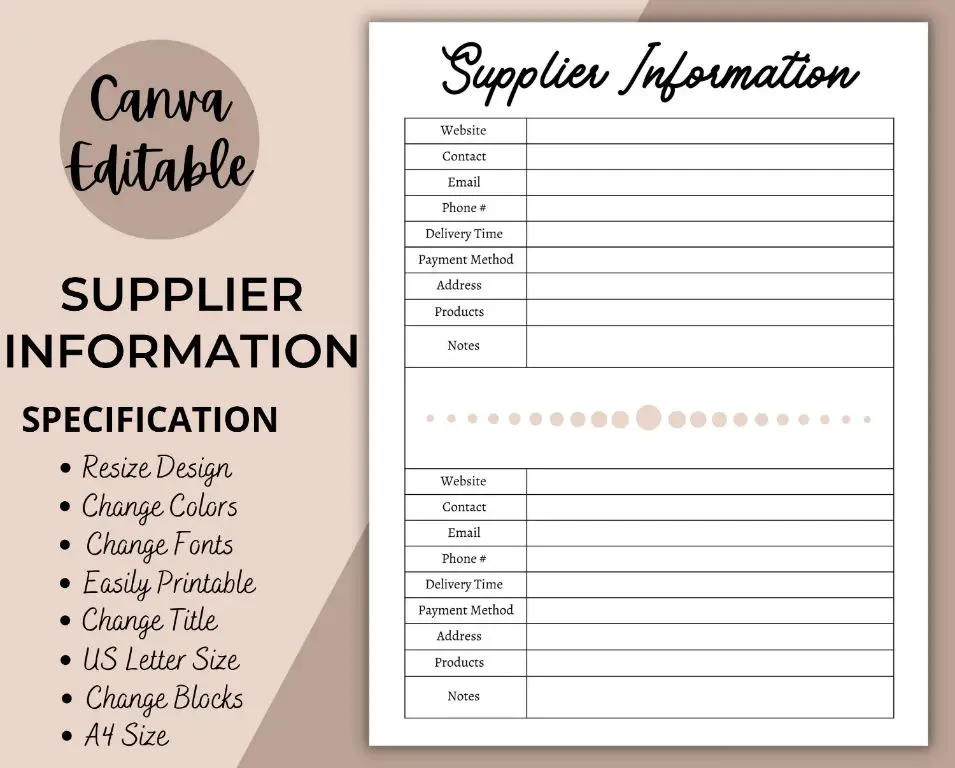How Do You Create A Hazard Label?
A hazard label is a label that contains important information about hazardous materials or items. The purpose of hazard labels is to quickly communicate the risks and dangers of certain products or substances so that proper precautions can be taken.
There are several types of hazard labels:
- Chemical hazard labels – Used for hazardous chemicals and communicate health, physical, and environmental hazards.
- Biohazard labels – Used for materials contaminated with potentially infectious agents.
- Radiation hazard symbols – Used for radioactive materials.
- Warning labels – Used for general warnings on consumer products.
Hazard labels use colors, symbols, and words to alert people about potential risks. They are an important part of product safety and help prevent accidents and injuries.
Label Content
Hazard labels contain key information to communicate the hazards of chemical products. Some of the required content includes:
- Product identifier – The product identifier matches that listed on the Safety Data Sheet (SDS). It allows cross-referencing between the label and SDS.
- Signal word – Labels must have one of two signal words, “Danger” or “Warning.” “Danger” indicates more severe hazards.
- Hazard statement – Hazard statements describe the nature and degree of the chemical hazards per OSHA requirements, such as “Causes damage to lungs through prolonged or repeated exposure.”
- Precautionary statement – Precautionary statements provide recommended measures to minimize or prevent adverse effects from exposure. For example, “Do not breathe dusts or mists.”
For complete label content requirements, see the OSHA Brief on Hazard Communication Standard Labels.
Label Design
When designing a hazard label, some key considerations for the layout and visual presentation include:
Font Style and Size: Optimal fonts for hazard labels are sans serif fonts like Arial that are easy to read. The font size should be at least 14 point for the signal word (“Danger”), and at least 10 point for other text (Safety Label Best Practices).
Layout: The label should have clear, organized sections. The label’s layout starts with the signal word at the top in a large font. Pictograms, hazard and precautionary statements come next in the middle. Supplier information is at the bottom. Having organized, consistent sections makes the label easy to quickly understand.
Use of Color: Contrasting colors are important for legibility. The text should stand out clearly against the label’s background color. Red, orange, or black are often used for text and symbols to denote danger. High contrast helps the warnings stand out (Labeling Best Practices GHS and OSHA).
Label Placement
When creating hazard labels, it is important to consider where to place the labels on the product. According to the U.S. Department of Transportation’s “Hazardous Materials Markings, Labeling and Placarding Guide”, the label must be placed on a background of contrasting color and must be clearly visible. The label must be located on the same surface of the package near the proper shipping name marking. For small packages that will not accommodate a full size label, the label can be reduced as long as it remains legible.
For different product types, the label placement may vary. For example, on drums the label should be placed on the upper one-third of the drum. On cylinders, the label should be placed on the upper one-third of the cylinder and at equidistant intervals. On woven plastic or textile bags, the label should be stenciled directly on the bag surface. For shipments in freight containers, the labels should be placed on all four sides of the freight container. No matter the product type, the hazard label should always be prominently displayed and easy to locate.
Proper label placement ensures that handlers and emergency responders can quickly identify the hazards associated with the materials. Following DOT regulations for label placement provides consistency across different packages.
Pictograms
Pictograms are graphic symbols used to quickly communicate specific hazard information on labels (What Do the GHS Pictograms Mean?, 2021). They are a key element of the Globally Harmonized System of Classification and Labelling of Chemicals (GHS), implemented to provide easily understandable safety information on hazardous chemicals (The Meaning Behind Hazard Pictograms, n.d.).
There are a standardized set of 9 hazard pictograms under the GHS that correspond to specific physical, health, or environmental hazards. These include (Understanding GHS Safety Data Sheets (SDS), 2017):
- Flame – Flammable hazards
- Flame over circle – Oxidizing hazards
- Exploding bomb – Explosive hazards
- Corrosion – Corrosive hazards
- Skull and crossbones – Acute toxicity hazards
- Health hazard – Chronic health hazards
- Exclamation mark – General cautionary warning
- Environment – Environmental toxicity hazards
- Gas cylinder – Gases under pressure
Using these standardized pictograms allows workers and emergency personnel to quickly recognize hazards, even if they don’t understand the language used on the label (What Do the GHS Pictograms Mean?, 2021). They are a crucial visual component for communicating dangers.
Supplier Information

The supplier information section of a hazard label contains important details about the company that manufactured or supplied the hazardous chemical. According to OSHA’s Hazard Communication Standard, the supplier information must include the name, address and phone number of the chemical manufacturer, importer or other responsible party (OSHA, n.d.).
Having the supplier’s contact information on the label ensures that downstream users have the ability to obtain additional information about the hazards of the chemical. It also enables the flow of information along the supply chain. The supplier identification section helps provide traceability in case any issues arise with the chemical product.
The specific requirements around supplier identification allow chemical manufacturers and distributors to be held accountable for the hazard information and warnings associated with their products. Responsible parties must be identifiable on the label so proper precautions can be taken by workers handling hazardous chemicals.
Creating the Label
When creating a hazard label, you first need to decide how you will print the label. Common options include:
- Using a label printer – Many labels printers like thermal transfer or direct thermal printers are designed specifically for printing high-quality labels. This allows printing labels on-demand and in any quantity.
- Using a regular printer – You can print labels using a regular inkjet or laser desktop printer. However, you may be limited in label materials. Printers may have difficulty properly printing on specialized label stock.
- Using a commercial printing service – For large volumes, consider using a professional printing service. They can print and die cut labels in bulk onto roll stock. This is more cost-effective for hundreds or thousands of labels. https://fivestarprint.co.nz/label-printing/hazard-labels/
You also need to select the proper label material. Common options include:
- Paper – Most affordable option but less durable.
- Polyester – More durable and weather/chemical resistant.
- Vinyl – Another very durable option, but costs more.
Consider the label application and environment when selecting materials. For example, a polyester or vinyl label would be better for a harsh industrial environment vs. a paper label for a benign office application.
Regulations
There are several key regulations that govern hazard labeling in the workplace:
The OSHA Hazard Communication Standard (HCS) outlines comprehensive requirements for hazard labeling in the workplace. The HCS requires chemical manufacturers, distributors, or importers to provide Safety Data Sheets (SDS) and labels for each hazardous chemical. Label elements must include pictograms, a signal word, hazard statements, precautionary statements, and supplier identification (OSHA).
All labels must contain the following 6 elements according to OSHA’s HCS: Product identifier, signal word, hazard statement(s), pictogram(s), precautionary statement(s), and name, address and telephone number of the chemical manufacturer, importer, or other responsible party (OSHA).
The Globally Harmonized System of Classification and Labeling of Chemicals (GHS) is an international system that provides globally consistent requirements for chemical hazard classification and communication. OSHA has adopted the GHS to revise and update labeling requirements under the HCS (OSHA).
Other regulations such as hazardous materials transportation laws or state-specific requirements may also apply to certain hazard labels.
Label Updating
Labels must be updated when new information on the hazards of the chemical become available. As noted on the OSHA website, “When a chemical manufacturer, importer, distributor, or employer learns significant new information about the hazards of a chemical, this new information shall be added to the label within six months.” (OSHA’s HazCom Standard and the GHS Seventh Edition)
To update labels, the manufacturer, importer, or distributor must obtain the revised safety data sheet with the new information from the chemical manufacturer or importer. The new hazard information must then be added to the label, which may involve redesigning the label. Any additional pictograms needed to convey the new hazard information must be added. Distributors must replace older labels on containers with the newly updated labels. (OSHA 7th Edition GHS Update Planned for Spring)
Employers must ensure newly received containers have the updated labels. For existing container inventories, employers have options for updating labels. They can replace old labels, apply stickers with new information over the old labels, or use signage to convey the new hazards. Training must also be updated to reflect the new label information.
Conclusion
Proper hazard labeling is essential for workplace and public safety. Following the key steps outlined in this guide will help ensure your labels effectively communicate potential hazards.
To summarize, creating an effective hazard label involves:
- Identifying all hazards associated with the chemical or product
- Selecting suitable pictograms, signal words, and hazard statements that align with GHS guidelines
- Providing clear supplier identification and contact information
- Using a label design that makes vital information highly visible
- Placing labels prominently on all hazardous materials and containers
- Regularly reviewing and updating labels to reflect the latest safety data
By adhering to hazard communication regulations and best practices, companies can help protect their workers as well as the general public from chemical hazards through proper labeling.


